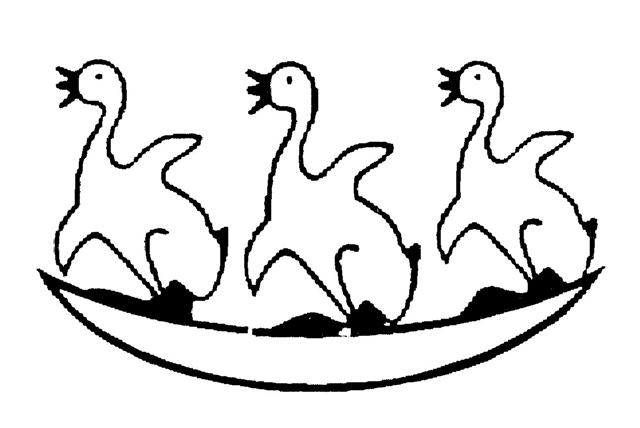|
||||||||

GD42 |
vae kore | 'Without legs' (vae kore) was what Metoro said twice at this type of glyph. Therefore it is not a much of an evidence for what is depicted. | ||||||
A few preliminary remarks and imaginations: 1. The shape of this little bird suggests the form of an egg; the egg presumably, from which he just has hatched. The idea seems to be beginning. "Manu-tera, the Easter Island name for the sooty tern, means literally 'sunbird'. From this we take it as a very likely, though there is no proof, that the tern would have been seen as a symbol of the sun - just as the falcon and the phoenix were symbols of the sun in acient Egypt. The latter, the mythical Bennu bird, was associated with Heliopolis ('the City of the Sun') and with the pyramid-shaped Benben sunstone, and was famously linked to an egg: As its end approached the phoenix fashioned a nest of aromatic boughs and spices, set it on fire, and was consumed in the flames. From the pyre miraculously sprang a new phoenix, which, after embalming its father's ashes in an egg of myrrh, flew with the ashes to Heliopolis where it deposited them on the altar in the temple of the sun god Ra. The possibility cannot be ruled out that the birdman cult of Easter Island may have expressed ideas such as these. 'If one were to propose antecedents to the practice', comments the historian R. A. Jairazbhoy: the thought of the Egg of the Egyptian sun god (the cosmic egg) would have to come to mind. The Book of the Dead says that this egg was laid by Kenkenur, or 'the Great Cackler' (an alias of the phoenix), and the deceased watches and guards it. This is declared in the Chapter headed 'Having Dominion over the Water in the Underworld'. And again the journey on the reed float across the sea is reminiscent of the journey of the Egyptian sun god Ra to the horizon on reed floats." (Hancock 3)
"This hieroglyph was used as a determinative for the word sesch, 'bird's nest', and in ideographs like tau, 'young bird, nestling' ... The sign shows a few, usually three, ducklings or possibly green geese ... in a nest formed like the crescent of the moon. Sometimes there are eggs instead of young birds in the nest ... " (Wilkinson) |
||||||||
